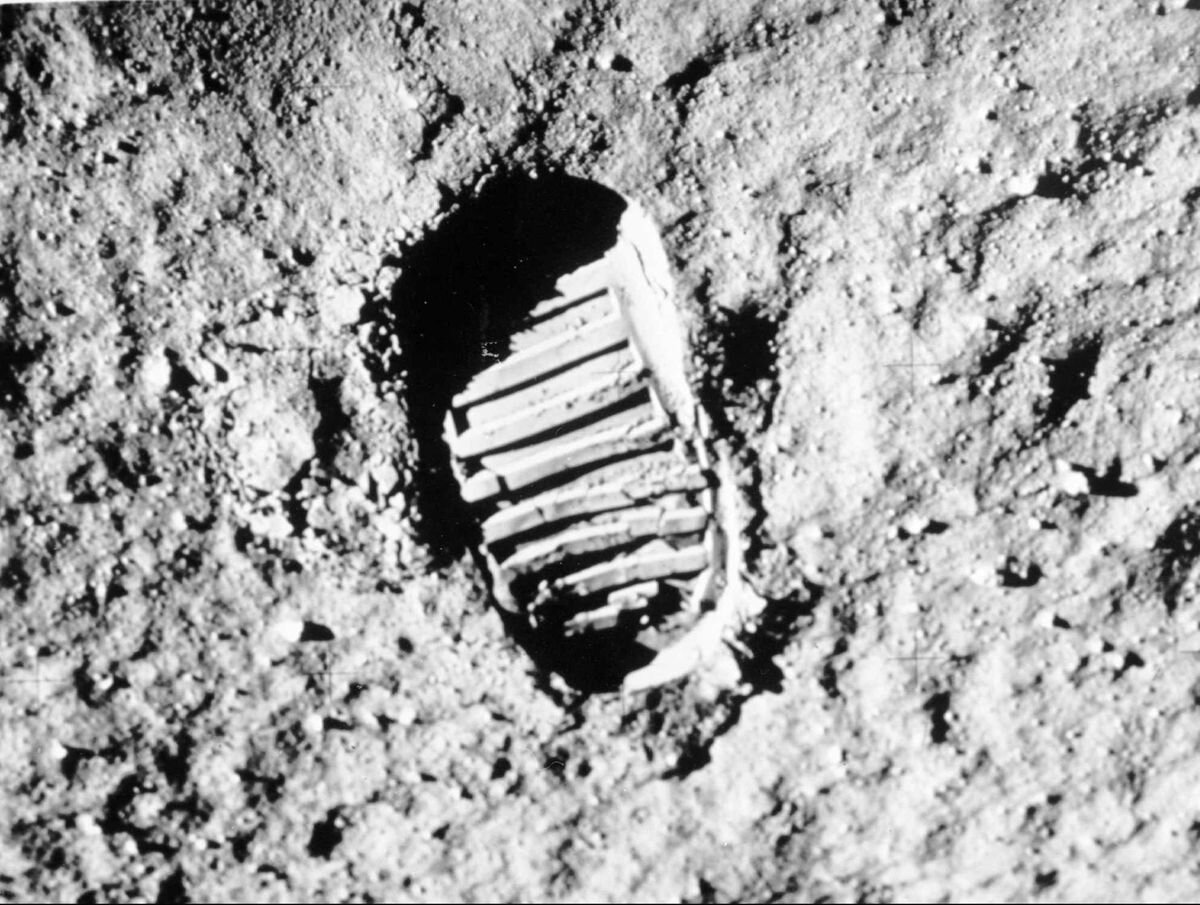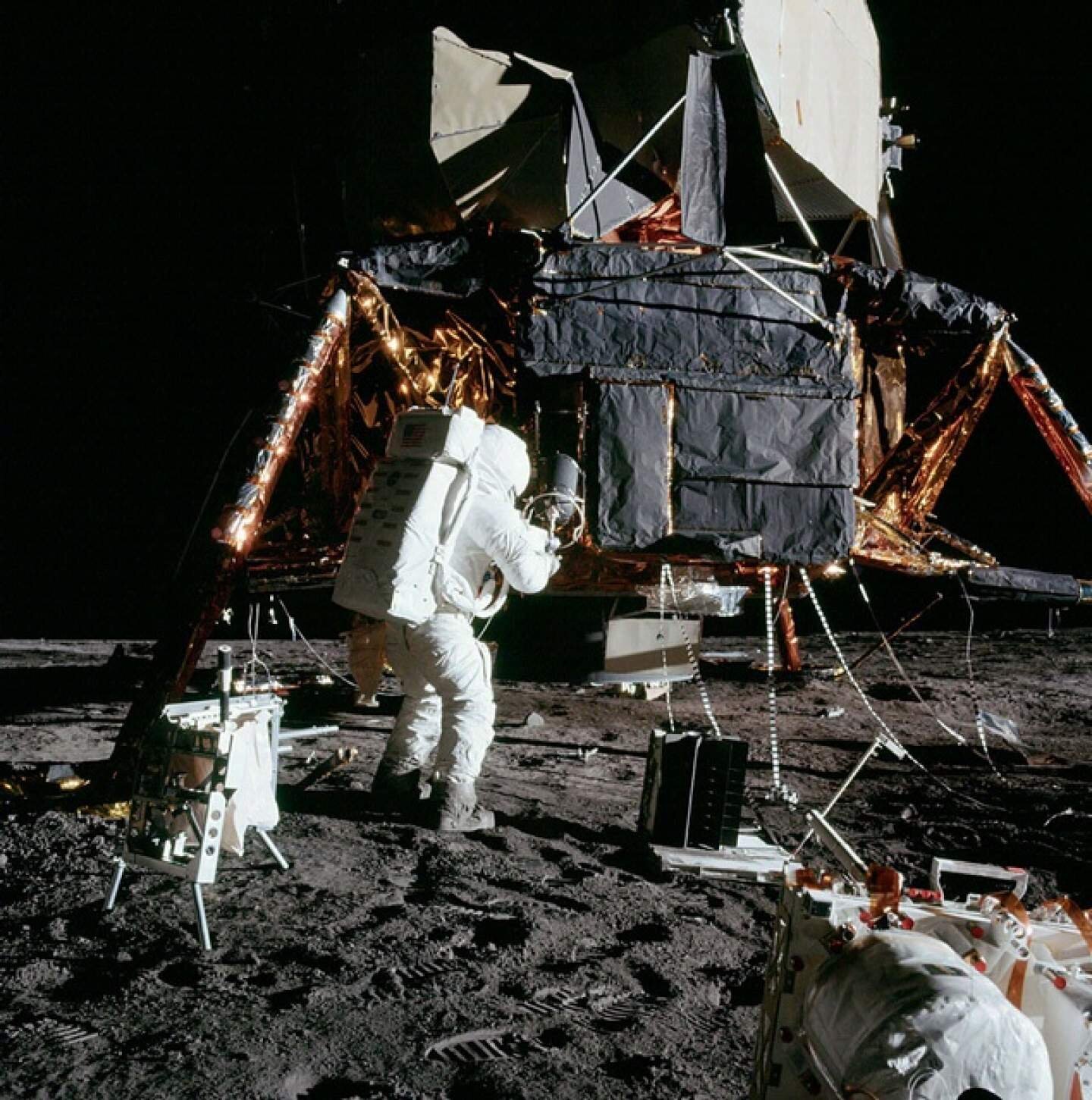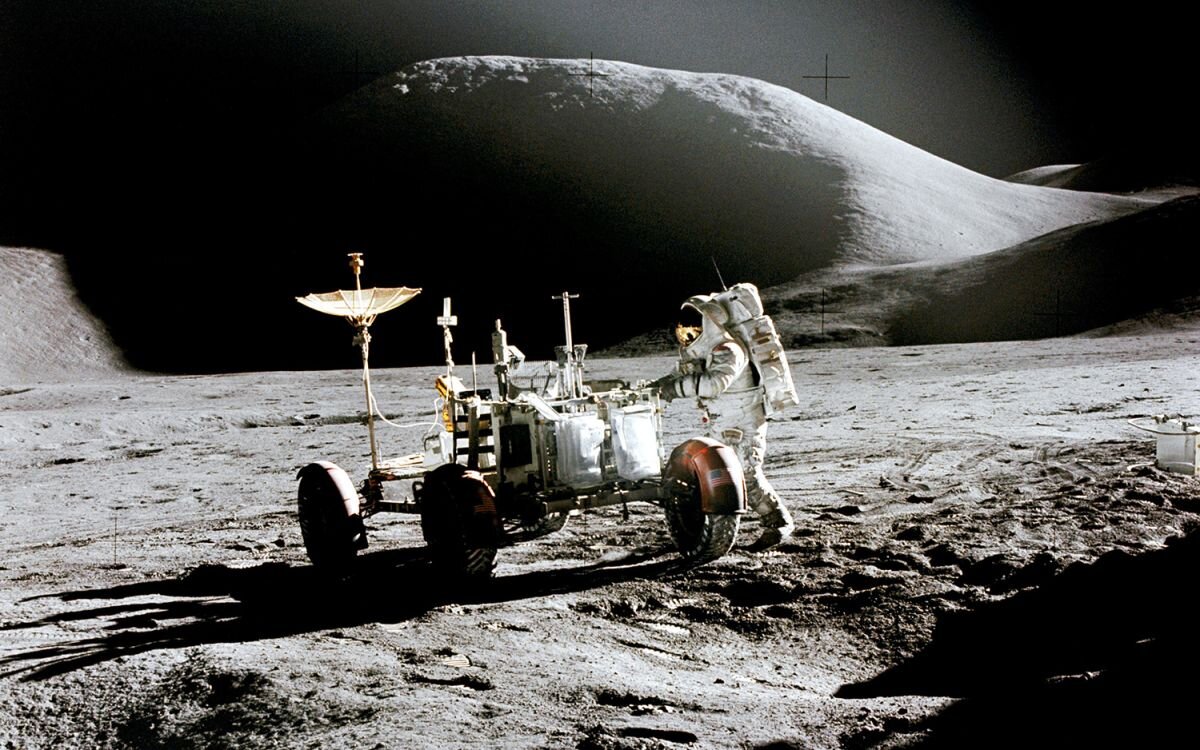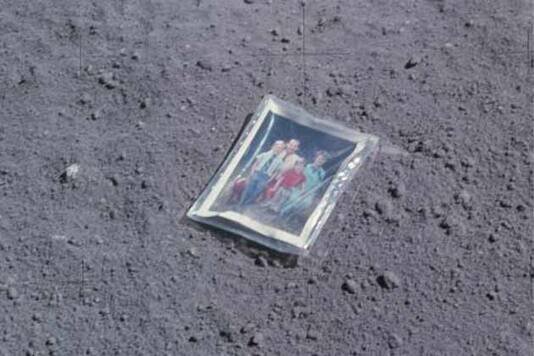Man, on the Moon
The Moon with every man landing mapped!
Some time back I had photographed the full #Moon and realised all the landing spots were visible. So I decided to plot all the 6 human moon landings and map them out on the image and put it together as a video. Incidentally all of these were, I think, on the near side of the Moon. I wonder where the 7th will be?
Read on to discover mankind’s journey, the six missions that landed and the 12 men who have walked on the moon.
The Apollo program, also known as Project Apollo, was the third United States human spaceflight program carried out by the National Aeronautics and Space Administration (NASA), which succeeded in landing the first humans on the Moon from 1969 to 1972. It was first conceived during Dwight D. Eisenhower's administration as a three-person spacecraft to follow the one-person Project Mercury, which put the first Americans in space. Apollo was later dedicated to President John F. Kennedy's national goal of "landing a man on the Moon (by the end of the 1960s) and returning him safely to the Earth" in an address to Congress on May 25, 1961. It was the third US human spaceflight program to fly, preceded by the two-person Project Gemini conceived in 1961 to extend spaceflight capability in support of Apollo.
Kennedy's goal was accomplished on the Apollo 11 mission when astronauts Neil Armstrong and Buzz Aldrin landed their Apollo Lunar Module (LM) on July 20, 1969, and walked on the lunar surface, while Michael Collins remained in lunar orbit in the command and service module (CSM), and all three landed safely on Earth on July 24.
Five subsequent Apollo missions also landed astronauts on the Moon, the last, Apollo 17, in December 1972. In these six spaceflights, twelve people walked on the Moon. The following are the mission patches from these six spaceflights also illustrated in the video.
Earthrise, the iconic 1968 image from Apollo 8 taken by astronaut William Anders
Apollo ran from 1961 to 1972, with the first crewed flight in 1968. It encountered a major setback in 1967 when an Apollo 1 cabin fire killed the entire crew during a pre launch test. After the first successful landing, sufficient flight hardware remained for nine follow-on landings with a plan for extended lunar geological and astrophysical exploration. Budget cuts forced the cancellation of three of these. Five of the remaining six missions achieved successful landings, but the Apollo 13 landing was prevented by an oxygen tank explosion in transit to the Moon, which destroyed the service module’s capability to provide electrical power, crippling the CSM's propulsion and life support systems. The crew returned to Earth safely by using the lunar module as a "lifeboat" for these functions. Apollo used Saturn family rockets as launch vehicles, which were also used for an Apollo Applications Program, which consisted of Skylab, a space station that supported three crewed missions in 1973–74, and the Apollo–Soyuz Test Project, a joint US-Soviet Union Earth-orbit mission in 1975.
Apollo set several major human spaceflight milestones. It stands alone in sending crewed missions beyond low Earth orbit. Apollo 8 was the first crewed spacecraft to orbit another celestial body, and Apollo 11 was the first crewed spacecraft to land humans on one.
The mission was achieved on Apollo 11 in July 1969 by an all-Gemini veteran crew consisting of Neil Armstrong, Michael Collins and Buzz Aldrin. Armstrong and Aldrin performed the first landing at the Sea of Tranquility at 20:17:40 UTC on July 20, 1969. They spent a total of 21 hours, 36 minutes on the surface, and spent 2 hours, 31 minutes outside the spacecraft, walking on the surface, taking photographs, collecting material samples, and deploying automated scientific instruments, while continuously sending black-and-white television back to Earth. The astronauts returned safely on July 24.
“That’s one small step for man, one giant leap for mankind. ”
This is a video I put together a while back to help my children experience the Apollo 11 Moon Landing. This is a combination of a timelapse of the moon, some photos I had taken and the actual audio from the landing including Neil Armstrong’s historic statement.
In November 1969, Gemini veteran Charles "Pete" Conrad and rookie Alan L. Bean made a precision landing on Apollo 12 within walking distance of the Surveyor 3 uncrewed lunar probe, which had landed in April 1967 on the Ocean of Storms. The command module pilot was Gemini veteran Richard F. Gordon Jr. Conrad and Bean carried the first lunar surface color television camera, but it was damaged when accidentally pointed into the Sun. They made two EVAs totaling 7 hours and 45 minutes. On one, they walked to the Surveyor, photographed it, and removed some parts which they returned to Earth.
The success of the first two landings allowed the remaining missions to be crewed with a single veteran as commander, with two rookies. Apollo 13 launched Lovell, Jack Swigert, and Fred Haise in April 1970, headed for the Fra Mauro formation. But two days out, a liquid oxygen tank exploded, disabling the service module and forcing the crew to use the LM as a "lifeboat" to return to Earth. Another NASA review board was convened to determine the cause, which turned out to be a combination of damage of the tank in the factory, and a subcontractor not making a tank component according to updated design specifications. Apollo was grounded again, for the remainder of 1970 while the oxygen tank was redesigned and an extra one was added.
Apollo 13's Fra Mauro mission was reassigned to Apollo 14, commanded in February 1971 by Mercury veteran Alan Shepard, with Stuart Roosa and Edgar Mitchell. This time the mission was successful. Shepard and Mitchell spent 33 hours and 31 minutes on the surface, and completed two EVAs totalling 9 hours 24 minutes, which was a record for the longest EVA by a lunar crew at the time.
Apollo 15 was launched on July 26, 1971, with David Scott, Alfred Worden and James Irwin. Scott and Irwin landed on July 30 near Hadley Rille, and spent just under two days, 19 hours on the surface. In over 18 hours of EVA, they collected about 77 kilograms (170 lb) of lunar material.
Apollo 16 landed in the Descartes Highlands on April 20, 1972. The crew was commanded by John Young, with Ken Mattingly and Charles Duke. Young and Duke spent just under three days on the surface, with a total of over 20 hours EVA.
Apollo 17 was the last of the Apollo program, landing in the Taurus–Littrow region in December 1972. Eugene Cernan commanded Ronald E. Evans and NASA's first scientist-astronaut, geologist Dr. Harrison H. Schmitt. Schmitt was originally scheduled for Apollo 18, but the lunar geological community lobbied for his inclusion on the final lunar landing. Cernan and Schmitt stayed on the surface for just over three days and spent just over 23 hours of total EVA.
Overall the Apollo program returned 842 pounds (382 kg) of lunar rocks and soil to Earth, greatly contributing to the understanding of the Moon's composition and geological history. The program laid the foundation for NASA's subsequent human spaceflight capability, and funded construction of its Johnson Space Center and Kennedy Space Center. Apollo also spurred advances in many areas of technology incidental to rocketry and human spaceflight, including avionics, telecommunications, and computers.
Some of the most famous photographs from the missions to the Moon - sourced from the NASA/PROJECT APOLLO ARCHIVE and other sources like Wikipedia. For more photos visit the NASA Galleries








Related Posts











